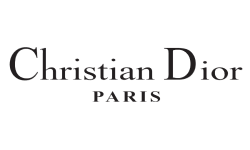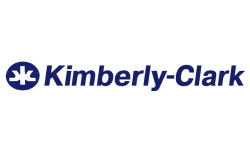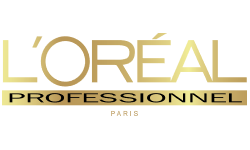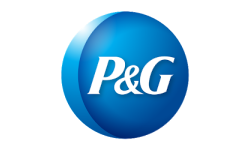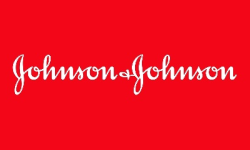
Global Cosmetic Chemicals Market by Product Type (Film-Formers, Emollients & Moisturizers, Surfactants), by Application (Hair Care, Skin Care, Makeup) and Region (North America, Latin America, Europe, Asia Pacific and Middle East & Africa), Forecast To 2028
Summary of the Report
Global cosmetic chemicals market was worth USD 19.9 billion in 2019. It is projected to grow at a compound annual rate (CAGR of 4.8%) between 2020 and 2027. Organic grade cosmetic chemicals are in high demand due to rising demand for natural cosmetics and consumer willingness to pay more for premium products.
Preservatives and thickeners are some of the most commonly used ingredients in cosmetics. They can be made synthetically or natural. You can also make synthetic chemicals from petroleum and bio-based ingredients. These chemicals, however, are made using complex production processes and derived catalysts and reagents . They are therefore called synthetic. Natural products can be plant, animal, or microbial.
Continuous research and development activities are key to the industry's success. The market players want sustainable formulations that are made with natural ingredients and free from artificial additives. Elevance Renewable Sciences, Inc., is a specialty chemical manufacturer that develops and markets emollients using its patent technology from plant-based products. These products can be used in skin lotions, cosmetics, or hair styling products.
In the future, technological advancements in cosmetic ingredient manufacturing are expected to cause a disruption to the cosmetic chemicals market. Givaudan, for example, uses plant cell culture and phytopeptides technology in order to create skin products. The market for cosmetic chemicals will be driven by the industry's ongoing R&D activities to create sustainable products that satisfy consumer demand.
Product Type Insights
In 2019, the emollients & moisturizer segment had a revenue share of around 30.0% and was the largest segment in the market. Emollients protect the skin from water loss and soften it. Emollients are found in many personal care and cosmetics products, including skin moisturizers, body lotions, and lipsticks. These emollients can be purchased in both synthetic and natural forms. Olive oil, coconut oil beeswax and lanolin are some of the most popular emollients.
Cosmetics products are made up a large part of preservatives. They are added to the formulations to prolong their shelf life and to prevent the growth of bacteria or fungi. These microorganisms can quickly ruin products and cause damage to applications. Preservatives that are water-soluble should be used as microbes live in water.
Cosmetic preservatives can come in different forms and amounts. Depending on the need of the product, the preservatives used can range from 0.01% to 5.0%. Some of the commonly used preservatives include formaldehyde, parabens, salicylic acid, benzyl alcohol, and tetrasodium ethylenediaminetetra-acetic acid (EDTA).
Application Insights
In 2019, the skin care products segment accounted for 35.0% of revenue and was the largest end-use segment in 2019. This is due to the increasing demand for skin products by people, who have more concerns about skin health and care. The market for cosmetic chemicals will benefit from the rising demand for sunscreens, face creams and body lotions around the world.
The development of skin care products that meet the needs of consumers is the focus for key players in the cosmetic chemicals industry. The market for cosmetic chemicals is also being driven by a shift in consumer preference to natural and organically derived products with natural ingredients. COBIOSA, a manufacturer of specialty chemicals, develops and distributes skin care products and other cosmetic products. The company primarily develops its chemicals from botanical including polyphenols,camelina, and marine, such as algae, collagen as well as insects.
Many cosmetics and personal care product companies, including Eminence (L'Oreal) and L'Oreal, are now producing natural-derived skin care products. Market growth will be aided by the ability of natural ingredients, which can enhance and improve skin health without side effects, in the next few years.
The main factors driving hair care products sales are growing concerns about grey hair and hair loss, as well as evolving styling trends in fashion. Hair fall, discoloration, and dandruff are all a result of increasing stress levels and pollution among youth and middle-aged people. These factors are expected to increase hair care product consumption among them. These factors will be a major contributor to the growth of the cosmetic chemicals market over the forecast period.
Customers can spend more on luxury products such as perfumes because of their increasing disposable income. Due to rising living standards, the hygiene products market is expected to grow over the forecast period. The key trend driving consumer awareness and product demand growth is the increased spending of cosmetics product manufacturers on marketing and commercialization.
Regional Insights
In 2019, North America was responsible for more than 35.6% of the global market for cosmetic chemicals. Cosmetic chemicals are mainly used to make organic personal care products. This is what drives the demand in the region. The key drivers of the regional market for cosmetic chemicals are increasing R&D investment by manufacturers and associated technological innovations in areas such as ingredient processing and cost-effective manufacturing of organic personal care products. This trend is expected to continue for the forecast period.
North American cosmetic chemicals market is characterized by the presence of small- and large-scale suppliers and producers of ingredients. The market for cosmetic chemicals is dominated by the Dow Chemical Company, Huntsman Corporation, Stepan Company, and Dow. There are also many other small- and medium-sized companies that compete in this space.
The largest market in the region for cosmetic chemicals is the U.S. The country's manufacturers are moving away from treating each product individually in personal care and adopting an integrated approach to health and beauty products. They are more open to innovation that links technological advances in health and industrial to beauty product effectiveness. Many industry players are working to increase the integration of biotechnology, pharmaceutical and food ingredient companies into beauty markets, which will lead to the launch of new technologically advanced ingredients.
Market Share Insights & Key Companies
This region's manufacturers are also involved in R&D, creating new products for their customers using a mix of organic and natural ingredients. However, direct sales continue to grow in market value and hold steady. Customers around the world are looking for products that offer value for money and have the same benefits as premium products, but at a lower cost. The following are some of the most prominent players in cosmetic chemicals markets:
-
Dow
-
Givaudan
-
Ashland Inc.
-
Eastman Chemical Company
-
Lonza Group
-
BASF SE
-
Lanxes
-
P&G Chemicals
-
Solvay S.A.
-
Evonik Industries AG
-
Bayer AG.
Up Market Research published a new report titled “Cosmetic Chemicals Market research report which is segmented by Product Type (Film-Formers, Emollients & Moisturizers, Surfactants), by Application (Hair Care, Skin Care, Makeup), By Players/Companies Bayer AG, BASF SE, Ashland Inc, Dow, Lonza Group, P&G Chemicals, Lanxess, Solvay SA, Eastman Chemical Company, Evonik Industries AG, Givaudan”. As per the study the market is expected to grow at a CAGR of XX% in the forecast period.
Report Scope
| Report Attributes | Report Details |
| Report Title | Cosmetic Chemicals Market Research Report |
| By Product Type | Film-Formers, Emollients & Moisturizers, Surfactants |
| By Application | Hair Care, Skin Care, Makeup |
| By Companies | Bayer AG, BASF SE, Ashland Inc, Dow, Lonza Group, P&G Chemicals, Lanxess, Solvay SA, Eastman Chemical Company, Evonik Industries AG, Givaudan |
| Regions Covered | North America, Europe, APAC, Latin America, MEA |
| Base Year | 2020 |
| Historical Year | 2018 to 2019 (Data from 2010 can be provided as per availability) |
| Forecast Year | 2028 |
| Number of Pages | 236 |
| Number of Tables & Figures | 166 |
| Customization Available | Yes, the report can be customized as per your need. |
The report covers comprehensive data on emerging trends, market drivers, growth opportunities, and restraints that can change the market dynamics of the industry. It provides an in-depth analysis of the market segments which include products, applications, and competitor analysis.

Global Cosmetic Chemicals Market Report Segments:
The market is segmented by Product Type (Film-Formers, Emollients & Moisturizers, Surfactants), by Application (Hair Care, Skin Care, Makeup).
Cosmetic Chemicals Market research report delivers a close watch on leading competitors with strategic analysis, micro and macro market trend and scenarios, pricing analysis and a holistic overview of the market situations in the forecast period. It is a professional and a detailed report focusing on primary and secondary drivers, market share, leading segments and geographical analysis. Further, key players, major collaborations, merger & acquisitions along with trending innovation and business policies are reviewed in the report.
Key Benefits for Industry Participants & Stakeholders:
- Industry drivers, restraints, and opportunities covered in the study
- Neutral perspective on the market performance
- Recent industry trends and developments
- Competitive landscape & strategies of key players
- Potential & niche segments and regions exhibiting promising growth covered
- Historical, current, and projected market size, in terms of value
- In-depth analysis of the Cosmetic Chemicals Market
Overview of the regional outlook of the Cosmetic Chemicals Market:
Based on region, the market is segmented into North America, Europe, Asia Pacific, Latin America and Middle East & Africa (MEA). North America region is further bifurcated into countries such as U.S., and Canada. The Europe region is further categorized into U.K., France, Germany, Italy, Spain, Russia, and Rest of Europe. Asia Pacific is further segmented into China, Japan, South Korea, India, Australia, South East Asia, and Rest of Asia Pacific. Latin America region is further segmented into Brazil, Mexico, and Rest of Latin America, and the MEA region is further divided into GCC, Turkey, South Africa, and Rest of MEA.

Highlights of The Cosmetic Chemicals Market Report:
- The market structure and projections for the coming years.
- Drivers, restraints, opportunities, and current trends of Cosmetic Chemicals Market.
- Historical data and forecast.
- Estimations for the forecast period 2028.
- Developments and trends in the market.
1. Film-Formers
2. Emollients & Moisturizers
3. Surfactants
7. By Application:1. Hair Care
2. Skin Care
3. Makeup
- Market scenario by region, sub-region, and country.
- Market share of the market players, company profiles, product specifications, SWOT analysis, and competitive landscape.
- Analysis regarding upstream raw materials, downstream demand, and current market dynamics.
- Government Policies, Macro & Micro economic factors are also included in the report.
We have studied the Cosmetic Chemicals Market in 360 degrees via. both primary & secondary research methodologies. This helped us in building an understanding of the current market dynamics, supply-demand gap, pricing trends, product preferences, consumer patterns & so on. The findings were further validated through primary research with industry experts & opinion leaders across countries. The data is further compiled & validated through various market estimation & data validation methodologies. Further, we also have our in-house data forecasting model to predict market growth up to 2028.
How you may use our products:
- Correctly Positioning New Products
- Market Entry Strategies
- Business Expansion Strategies
- Consumer Insights
- Understanding Competition Scenario
- Product & Brand Management
- Channel & Customer Management
- Identifying Appropriate Advertising Appeals

Reasons to Purchase the Cosmetic Chemicals Market Report:
- The report includes a plethora of information such as market dynamics scenario and opportunities during the forecast period
- Segments and sub-segments include quantitative, qualitative, value (USD Million,) and volume (Units Million) data.
- Regional, sub-regional, and country level data includes the demand and supply forces along with their influence on the market.
- The competitive landscape comprises share of key players, new developments, and strategies in the last three years.
- Comprehensive companies offering products, relevant financial information, recent developments, SWOT analysis, and strategies by these players.
Chapter 2 Assumptions and Acronyms Used
Chapter 3 Research Methodology
Chapter 4 Cosmetic Chemicals Market Overview
4.1 Introduction
4.1.1 Market Taxonomy
4.1.2 Market Definition
4.1.3 Macro-Economic Factors Impacting the Market Growth
4.2 Cosmetic Chemicals Market Dynamics
4.2.1 Market Drivers
4.2.2 Market Restraints
4.2.3 Market Opportunity
4.3 Cosmetic Chemicals Market - Supply Chain Analysis
4.3.1 List of Key Suppliers
4.3.2 List of Key Distributors
4.3.3 List of Key Consumers
4.4 Key Forces Shaping the Cosmetic Chemicals Market
4.4.1 Bargaining Power of Suppliers
4.4.2 Bargaining Power of Buyers
4.4.3 Threat of Substitution
4.4.4 Threat of New Entrants
4.4.5 Competitive Rivalry
4.5 Global Cosmetic Chemicals Market Size & Forecast, 2018-2028
4.5.1 Cosmetic Chemicals Market Size and Y-o-Y Growth
4.5.2 Cosmetic Chemicals Market Absolute $ Opportunity
Chapter 5 Global Cosmetic Chemicals Market Analysis and Forecast by Product Type
5.1 Introduction
5.1.1 Key Market Trends & Growth Opportunities by Product Type
5.1.2 Basis Point Share (BPS) Analysis by Product Type
5.1.3 Absolute $ Opportunity Assessment by Product Type
5.2 Cosmetic Chemicals Market Size Forecast by Product Type
5.2.1 Film-Formers
5.2.2 Emollients & Moisturizers
5.2.3 Surfactants
5.3 Market Attractiveness Analysis by Product Type
Chapter 6 Global Cosmetic Chemicals Market Analysis and Forecast by Application
6.1 Introduction
6.1.1 Key Market Trends & Growth Opportunities by Application
6.1.2 Basis Point Share (BPS) Analysis by Application
6.1.3 Absolute $ Opportunity Assessment by Application
6.2 Cosmetic Chemicals Market Size Forecast by Application
6.2.1 Hair Care
6.2.2 Skin Care
6.2.3 Makeup
6.3 Market Attractiveness Analysis by Application
Chapter 7 Global Cosmetic Chemicals Market Analysis and Forecast by Region
7.1 Introduction
7.1.1 Key Market Trends & Growth Opportunities by Region
7.1.2 Basis Point Share (BPS) Analysis by Region
7.1.3 Absolute $ Opportunity Assessment by Region
7.2 Cosmetic Chemicals Market Size Forecast by Region
7.2.1 North America
7.2.2 Europe
7.2.3 Asia Pacific
7.2.4 Latin America
7.2.5 Middle East & Africa (MEA)
7.3 Market Attractiveness Analysis by Region
Chapter 8 Coronavirus Disease (COVID-19) Impact
8.1 Introduction
8.2 Current & Future Impact Analysis
8.3 Economic Impact Analysis
8.4 Government Policies
8.5 Investment Scenario
Chapter 9 North America Cosmetic Chemicals Analysis and Forecast
9.1 Introduction
9.2 North America Cosmetic Chemicals Market Size Forecast by Country
9.2.1 U.S.
9.2.2 Canada
9.3 Basis Point Share (BPS) Analysis by Country
9.4 Absolute $ Opportunity Assessment by Country
9.5 Market Attractiveness Analysis by Country
9.6 North America Cosmetic Chemicals Market Size Forecast by Product Type
9.6.1 Film-Formers
9.6.2 Emollients & Moisturizers
9.6.3 Surfactants
9.7 Basis Point Share (BPS) Analysis by Product Type
9.8 Absolute $ Opportunity Assessment by Product Type
9.9 Market Attractiveness Analysis by Product Type
9.10 North America Cosmetic Chemicals Market Size Forecast by Application
9.10.1 Hair Care
9.10.2 Skin Care
9.10.3 Makeup
9.11 Basis Point Share (BPS) Analysis by Application
9.12 Absolute $ Opportunity Assessment by Application
9.13 Market Attractiveness Analysis by Application
Chapter 10 Europe Cosmetic Chemicals Analysis and Forecast
10.1 Introduction
10.2 Europe Cosmetic Chemicals Market Size Forecast by Country
10.2.1 Germany
10.2.2 France
10.2.3 Italy
10.2.4 U.K.
10.2.5 Spain
10.2.6 Russia
10.2.7 Rest of Europe
10.3 Basis Point Share (BPS) Analysis by Country
10.4 Absolute $ Opportunity Assessment by Country
10.5 Market Attractiveness Analysis by Country
10.6 Europe Cosmetic Chemicals Market Size Forecast by Product Type
10.6.1 Film-Formers
10.6.2 Emollients & Moisturizers
10.6.3 Surfactants
10.7 Basis Point Share (BPS) Analysis by Product Type
10.8 Absolute $ Opportunity Assessment by Product Type
10.9 Market Attractiveness Analysis by Product Type
10.10 Europe Cosmetic Chemicals Market Size Forecast by Application
10.10.1 Hair Care
10.10.2 Skin Care
10.10.3 Makeup
10.11 Basis Point Share (BPS) Analysis by Application
10.12 Absolute $ Opportunity Assessment by Application
10.13 Market Attractiveness Analysis by Application
Chapter 11 Asia Pacific Cosmetic Chemicals Analysis and Forecast
11.1 Introduction
11.2 Asia Pacific Cosmetic Chemicals Market Size Forecast by Country
11.2.1 China
11.2.2 Japan
11.2.3 South Korea
11.2.4 India
11.2.5 Australia
11.2.6 South East Asia (SEA)
11.2.7 Rest of Asia Pacific (APAC)
11.3 Basis Point Share (BPS) Analysis by Country
11.4 Absolute $ Opportunity Assessment by Country
11.5 Market Attractiveness Analysis by Country
11.6 Asia Pacific Cosmetic Chemicals Market Size Forecast by Product Type
11.6.1 Film-Formers
11.6.2 Emollients & Moisturizers
11.6.3 Surfactants
11.7 Basis Point Share (BPS) Analysis by Product Type
11.8 Absolute $ Opportunity Assessment by Product Type
11.9 Market Attractiveness Analysis by Product Type
11.10 Asia Pacific Cosmetic Chemicals Market Size Forecast by Application
11.10.1 Hair Care
11.10.2 Skin Care
11.10.3 Makeup
11.11 Basis Point Share (BPS) Analysis by Application
11.12 Absolute $ Opportunity Assessment by Application
11.13 Market Attractiveness Analysis by Application
Chapter 12 Latin America Cosmetic Chemicals Analysis and Forecast
12.1 Introduction
12.2 Latin America Cosmetic Chemicals Market Size Forecast by Country
12.2.1 Brazil
12.2.2 Mexico
12.2.3 Rest of Latin America (LATAM)
12.3 Basis Point Share (BPS) Analysis by Country
12.4 Absolute $ Opportunity Assessment by Country
12.5 Market Attractiveness Analysis by Country
12.6 Latin America Cosmetic Chemicals Market Size Forecast by Product Type
12.6.1 Film-Formers
12.6.2 Emollients & Moisturizers
12.6.3 Surfactants
12.7 Basis Point Share (BPS) Analysis by Product Type
12.8 Absolute $ Opportunity Assessment by Product Type
12.9 Market Attractiveness Analysis by Product Type
12.10 Latin America Cosmetic Chemicals Market Size Forecast by Application
12.10.1 Hair Care
12.10.2 Skin Care
12.10.3 Makeup
12.11 Basis Point Share (BPS) Analysis by Application
12.12 Absolute $ Opportunity Assessment by Application
12.13 Market Attractiveness Analysis by Application
Chapter 13 Middle East & Africa (MEA) Cosmetic Chemicals Analysis and Forecast
13.1 Introduction
13.2 Middle East & Africa (MEA) Cosmetic Chemicals Market Size Forecast by Country
13.2.1 Saudi Arabia
13.2.2 South Africa
13.2.3 UAE
13.2.4 Rest of Middle East & Africa (MEA)
13.3 Basis Point Share (BPS) Analysis by Country
13.4 Absolute $ Opportunity Assessment by Country
13.5 Market Attractiveness Analysis by Country
13.6 Middle East & Africa (MEA) Cosmetic Chemicals Market Size Forecast by Product Type
13.6.1 Film-Formers
13.6.2 Emollients & Moisturizers
13.6.3 Surfactants
13.7 Basis Point Share (BPS) Analysis by Product Type
13.8 Absolute $ Opportunity Assessment by Product Type
13.9 Market Attractiveness Analysis by Product Type
13.10 Middle East & Africa (MEA) Cosmetic Chemicals Market Size Forecast by Application
13.10.1 Hair Care
13.10.2 Skin Care
13.10.3 Makeup
13.11 Basis Point Share (BPS) Analysis by Application
13.12 Absolute $ Opportunity Assessment by Application
13.13 Market Attractiveness Analysis by Application
Chapter 14 Competition Landscape
14.1 Cosmetic Chemicals Market: Competitive Dashboard
14.2 Global Cosmetic Chemicals Market: Market Share Analysis, 2019
14.3 Company Profiles (Details – Overview, Financials, Developments, Strategy)
14.3.1 Bayer AG
14.3.2 BASF SE
14.3.3 Ashland Inc
14.3.4 Dow
14.3.5 Lonza Group
14.3.6 P&G Chemicals
14.3.7 Lanxess
14.3.8 Solvay SA
14.3.9 Eastman Chemical Company
14.3.10 Evonik Industries AG
14.3.11 Givaudan
The global Cosmetic Chemicals market has been segmented based on
By Product Type
- Film-Formers
- Emollients & Moisturizers
- Surfactants
- Hair Care
- Skin Care
- Makeup
- Asia Pacific
- North America
- Latin America
- Europe
- Middle East & Africa
- Bayer AG
- BASF SE
- Ashland Inc
- Dow
- Lonza Group
- P&G Chemicals
- Lanxess
- Solvay SA
- Eastman Chemical Company
- Evonik Industries AG
- Givaudan
Related Reports
Some other reports from this category!


